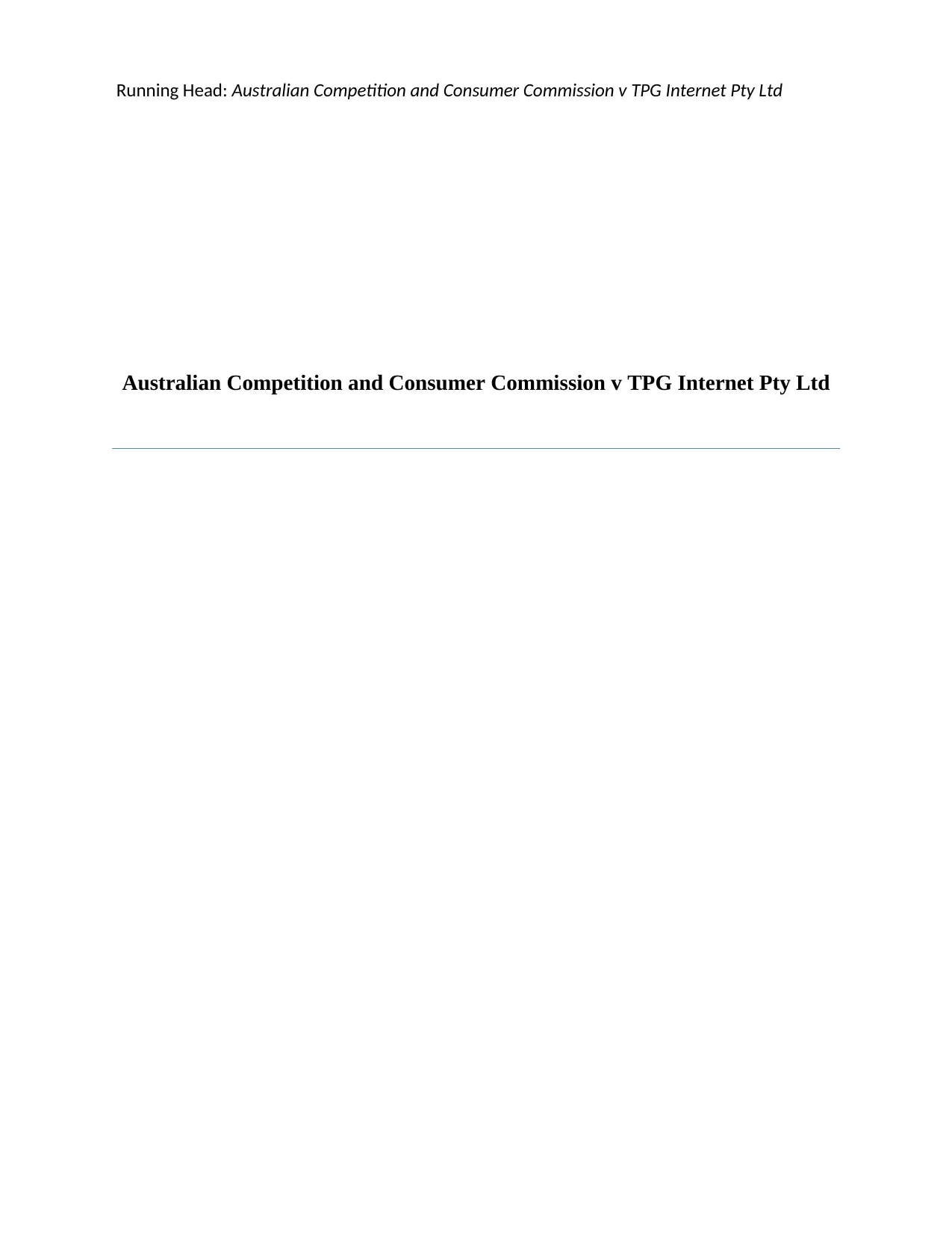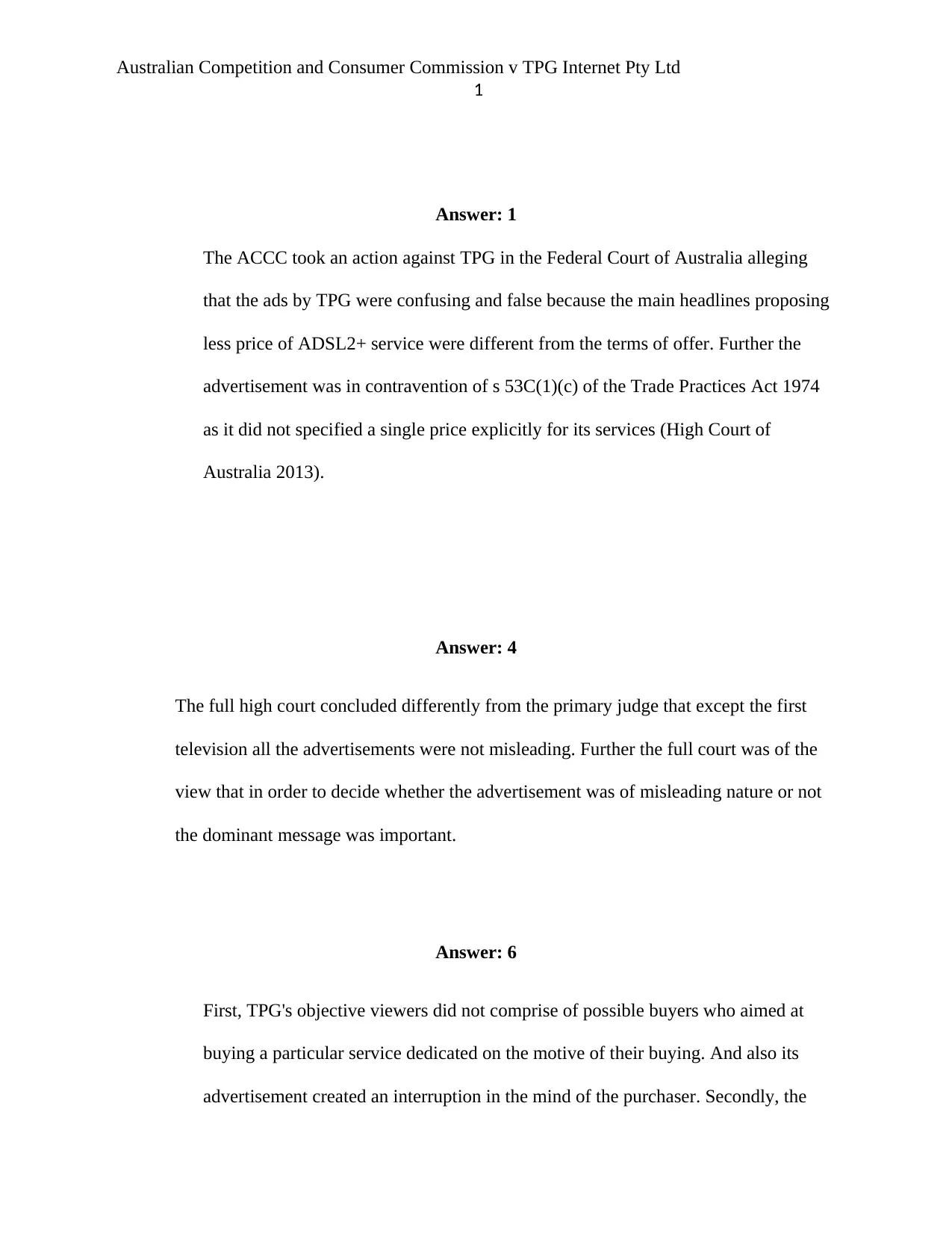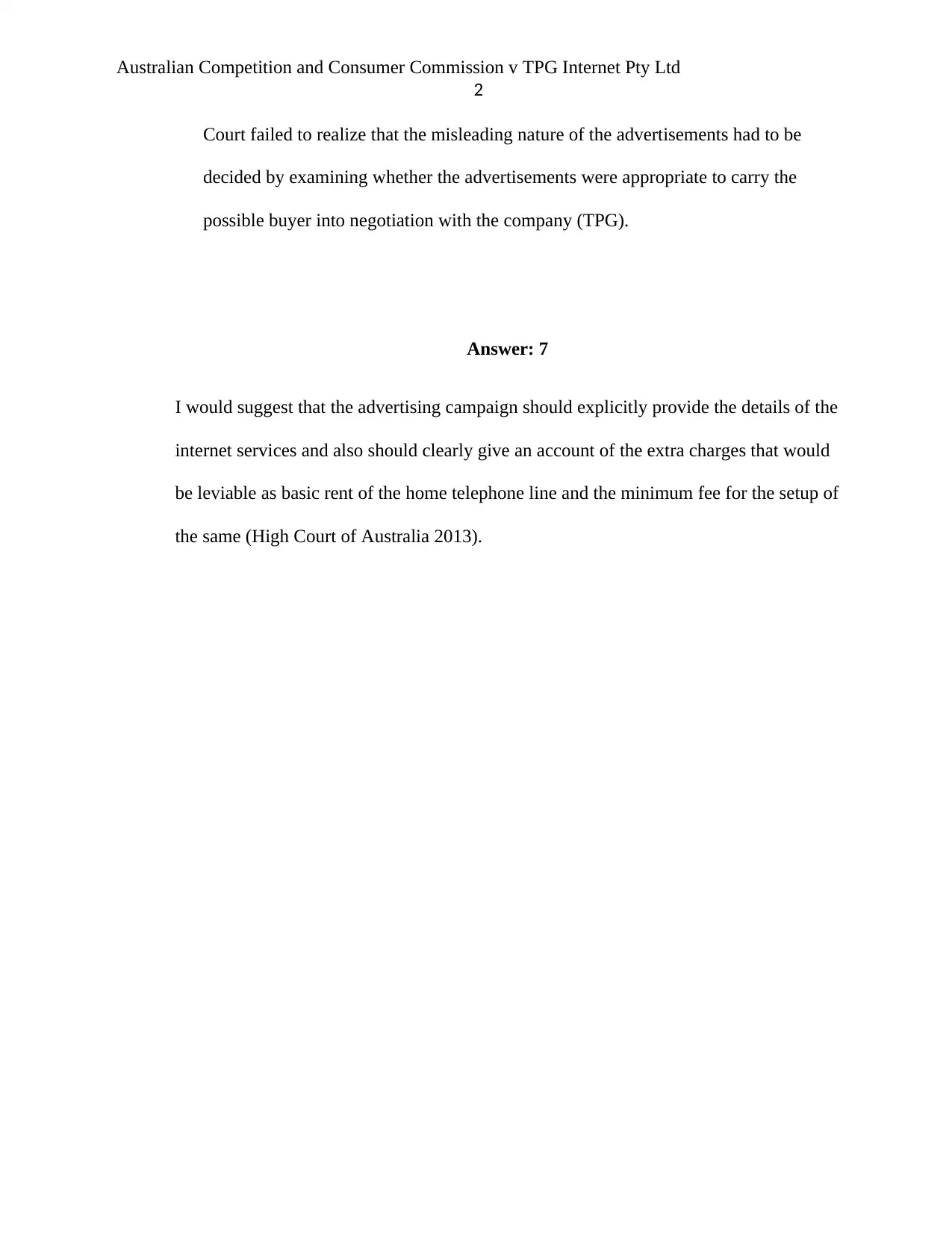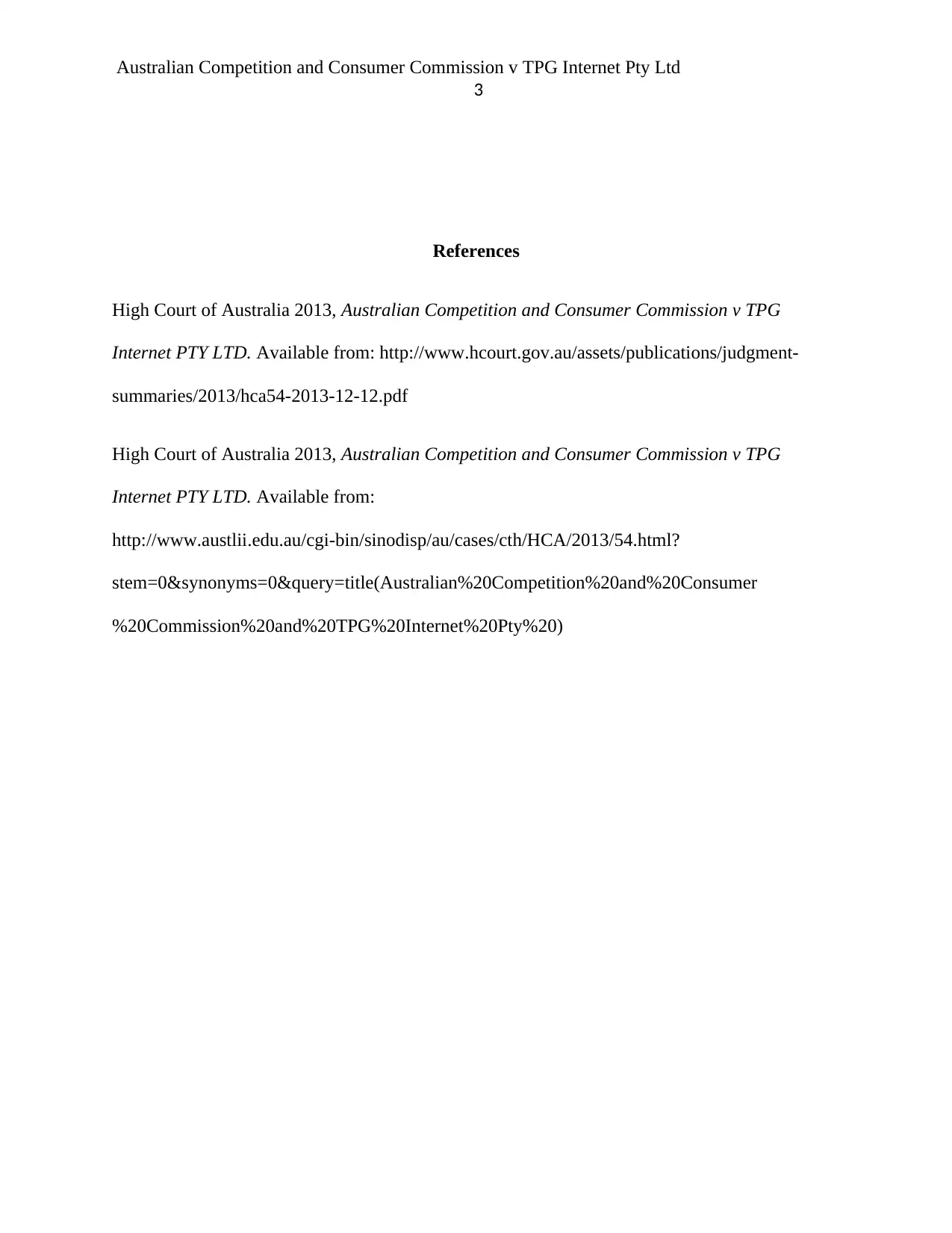Detailed Case Study: ACCC vs TPG Internet Pty Ltd - Legal Analysis
VerifiedAdded on 2019/10/30
|4
|389
|133
Case Study
AI Summary
This case study examines the legal dispute between the Australian Competition and Consumer Commission (ACCC) and TPG Internet Pty Ltd. The core issue revolves around allegations of misleading advertising concerning the pricing of TPG's ADSL2+ services. The ACCC argued that the advertisements, which highlighted a lower price, were deceptive due to the omission of additional charges. The case progressed through the Federal Court and ultimately reached the High Court of Australia. The High Court's decision considered the overall impression created by the advertisements, determining whether they were likely to mislead potential customers. The analysis includes an examination of the legal arguments, the court's reasoning, and the implications for advertising practices. The conclusion offers suggestions for clearer and more transparent advertising, emphasizing the importance of explicitly stating all associated costs. This case study provides a comprehensive overview of the legal principles and the practical application of competition law in the context of advertising.
1 out of 4










![[object Object]](/_next/static/media/star-bottom.7253800d.svg)